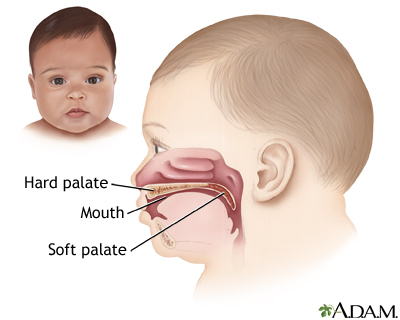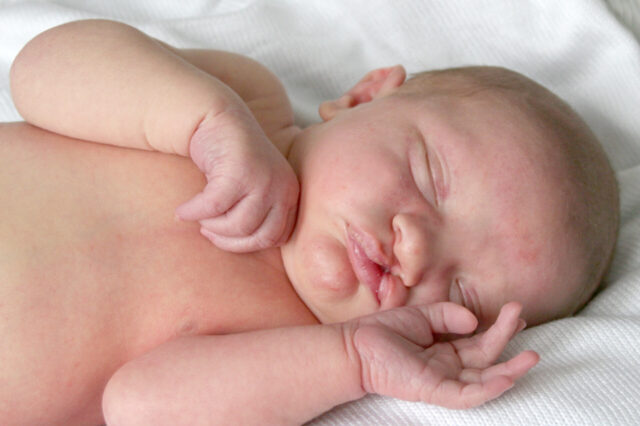With You Every Step of the Way: Continuity of Care for Cleft and Craniofacial Patients
Each year, one in 700 children is born with cleft and craniofacial differences. These can result from abnormal growth patterns of the face or skull, which…

Update your location to show providers, locations, and services closest to you.
Cleft lip and palate are birth defects that affect the upper lip and the roof of the mouth.
Cleft palate; Craniofacial defect
There are many causes of cleft lip and palate. Problems with genes passed down from 1 or both parents, drugs, viruses, or other toxins can all cause these birth defects. Cleft lip and palate may occur along with other syndromes or birth defects.
A cleft lip and palate can:
Babies are more likely to be born with a cleft lip and palate if they have a family history of these conditions or other birth defects.
A child may have one or more birth defects.
A cleft lip may be just a small notch in the lip. It may also be a complete split in the lip that goes all the way to the base of the nose.
A cleft palate can be on one or both sides of the roof of the mouth. It may go the full length of the palate.
Other symptoms include:
Problems that may be present because of a cleft lip or palate are:
A physical exam of the mouth, nose, and palate confirms a cleft lip or cleft palate. Medical tests may be done to rule out other possible health conditions.
Surgery to close the cleft lip is often done when the child is between 2 to 9 months old. Surgery may be needed later in life if the problem has a major effect on the nose area. Some patients may receive tympanostomy tubes during the surgery also.
A cleft palate is most often closed within the first year of life so that the child's speech develops normally. Sometimes, a prosthetic device is temporarily used to close the palate so the baby can feed and grow until surgery can be done.
Continued follow-up may be needed with speech therapists and orthodontists.
For more resources and information, see cleft palate support groups.
Most babies will heal without problems. How your child will look after healing depends on the severity of their condition. Your child might need another surgery to fix the scar from the surgery wound.
Children who had a cleft palate repair may need to see a dentist or orthodontist. Their teeth may need to be corrected as they come in.
Hearing problems are common in children with cleft lip or palate. Your child should have a hearing test at an early age, and it should be repeated over time.
Your child may still have problems with speech after the surgery. This is caused by muscle problems in the palate. Speech therapy will help your child.
Cleft lip and palate is most often diagnosed at birth. Follow your health care provider's recommendations for follow-up visits. Call your provider if problems develop between visits.

Dhar V. Cleft lip and palate. In: Kliegman RM, St. Geme JW, Blum NJ, Shah SS, Tasker RC, Wilson KM, eds. Nelson Textbook of Pediatrics. 21st ed. Philadelphia, PA: Elsevier; 2020:chap 336.
Felton M, Lee JW, Balumuka DD, Arneja JS, Chadha NK. Early placement of ventilation tubes in infants with cleft lip and palate: a systematic review. Otolaryngol Head Neck Surg. 2018;158(3):459-464. PMID: 29161200 pubmed.ncbi.nlm.nih.gov/29161200/.
Wang TD, Milczuk HA. Cleft lip and palate. In: Flint PW, Francis HW, Haughey BH, et al, eds. Cummings Otolaryngology: Head and Neck Surgery. 7th ed. Philadelphia, PA: Elsevier; 2021:chap 188.
Each year, one in 700 children is born with cleft and craniofacial differences. These can result from abnormal growth patterns of the face or skull, which…

Craniofacial deformities include birth defects in the face or head. Many people know about cleft lips and cleft palates, but that tends to be where their…
